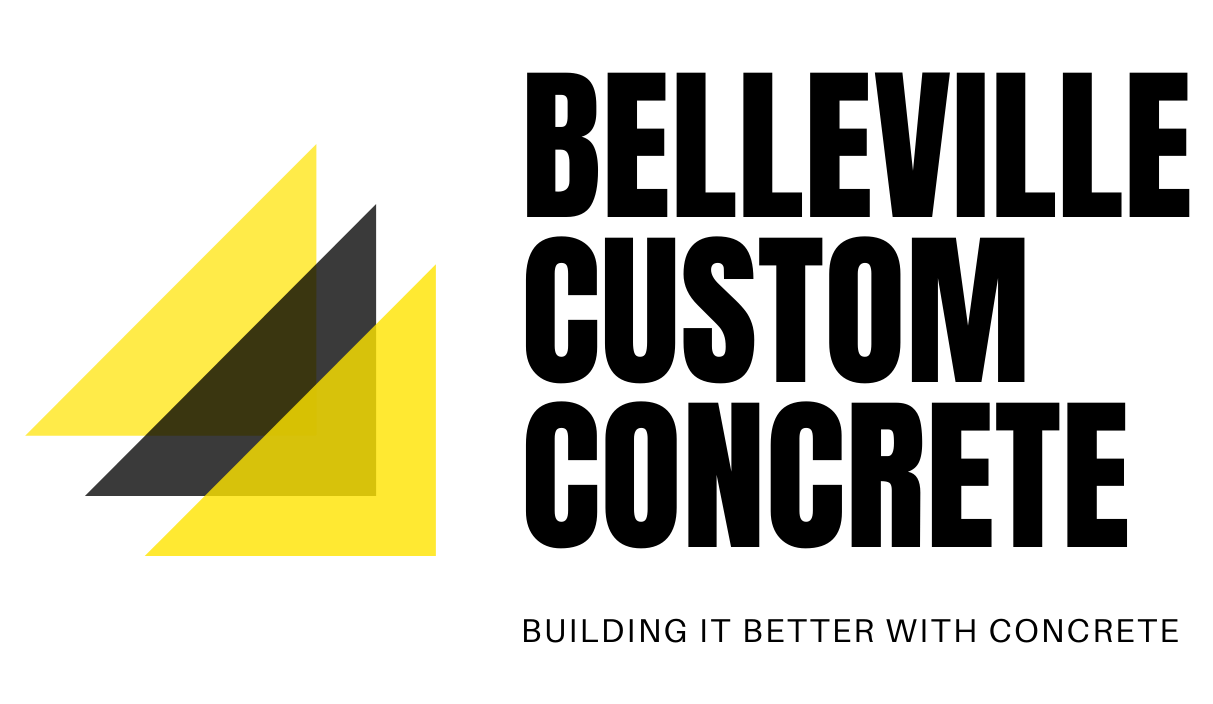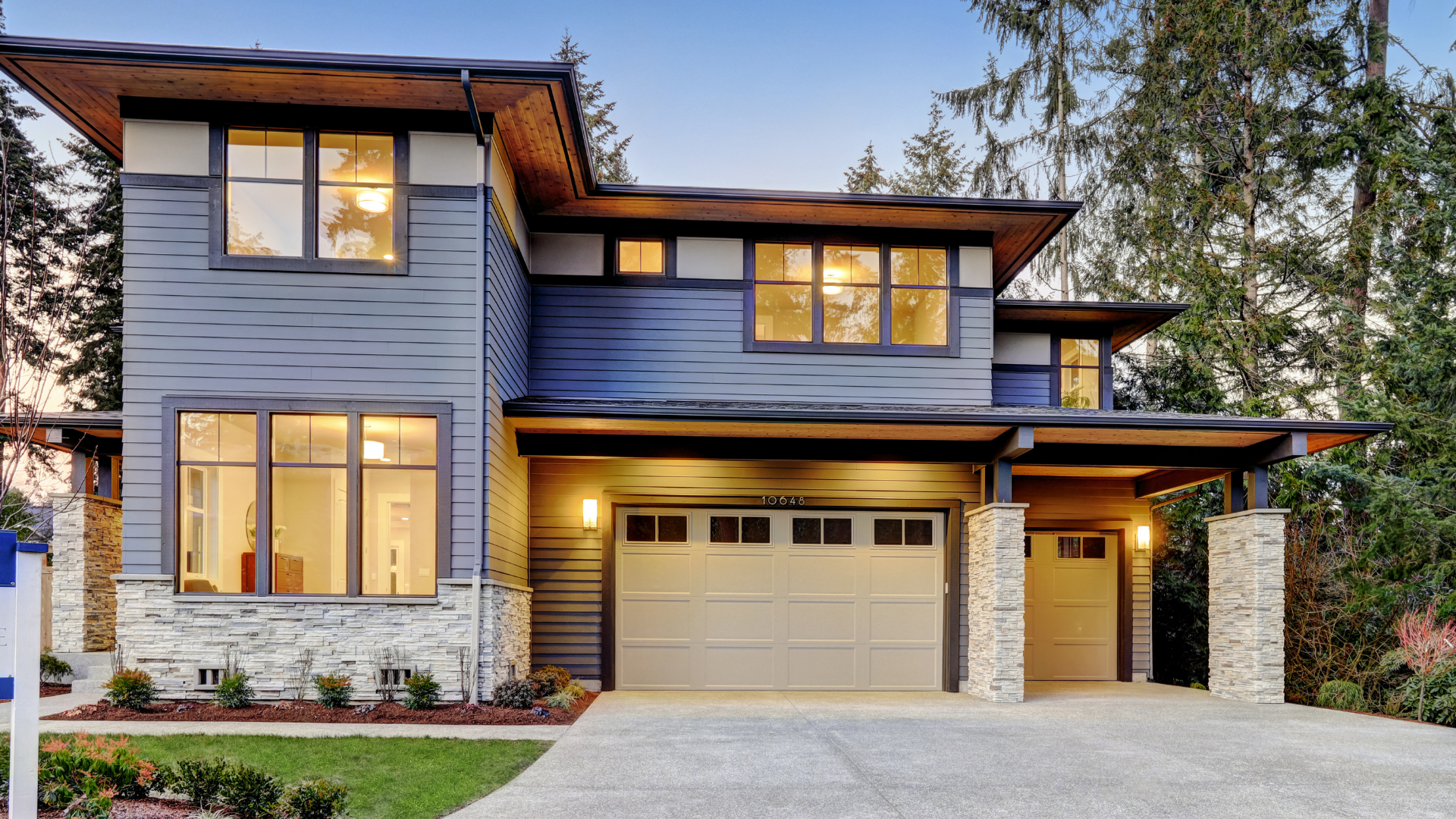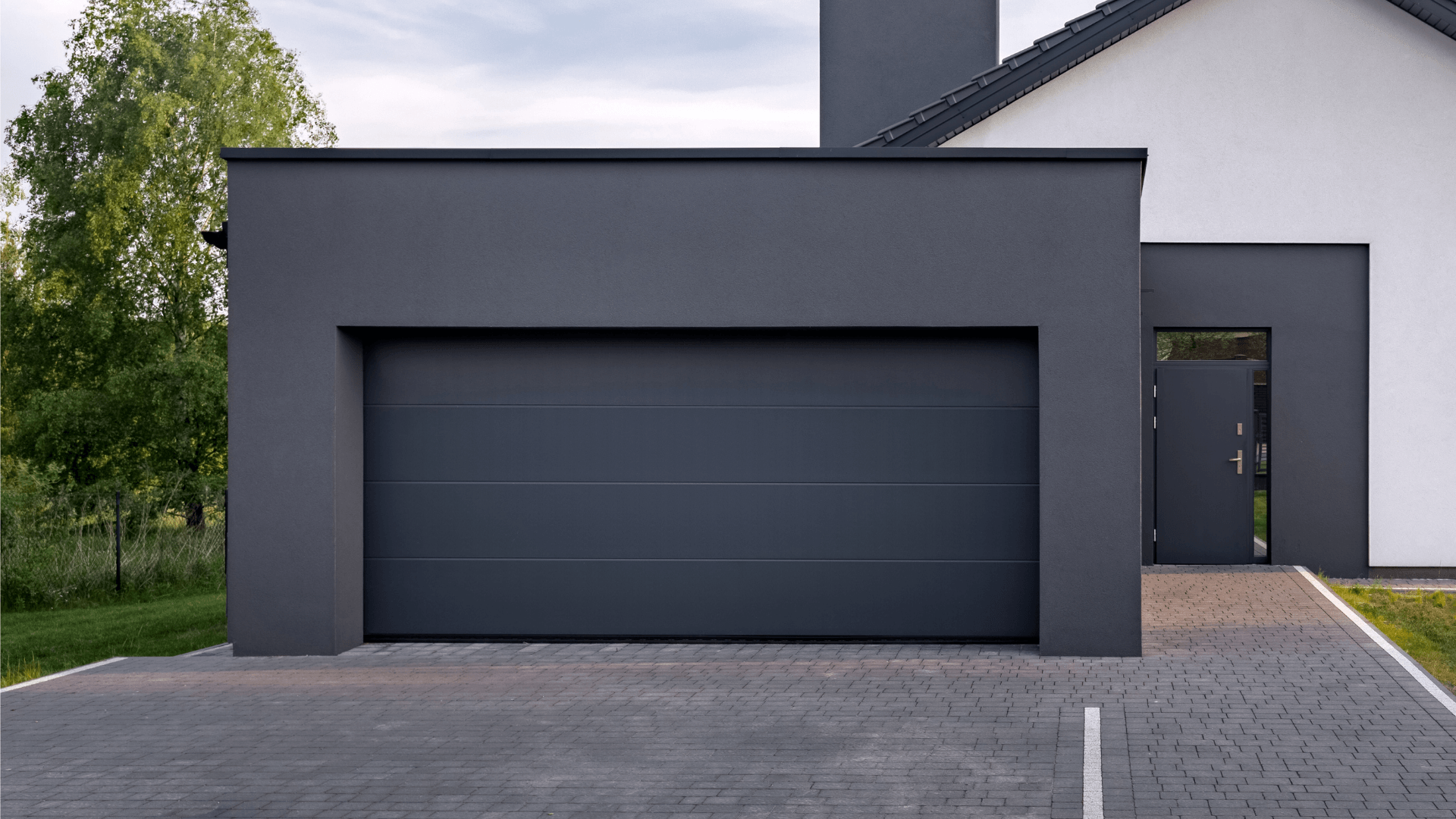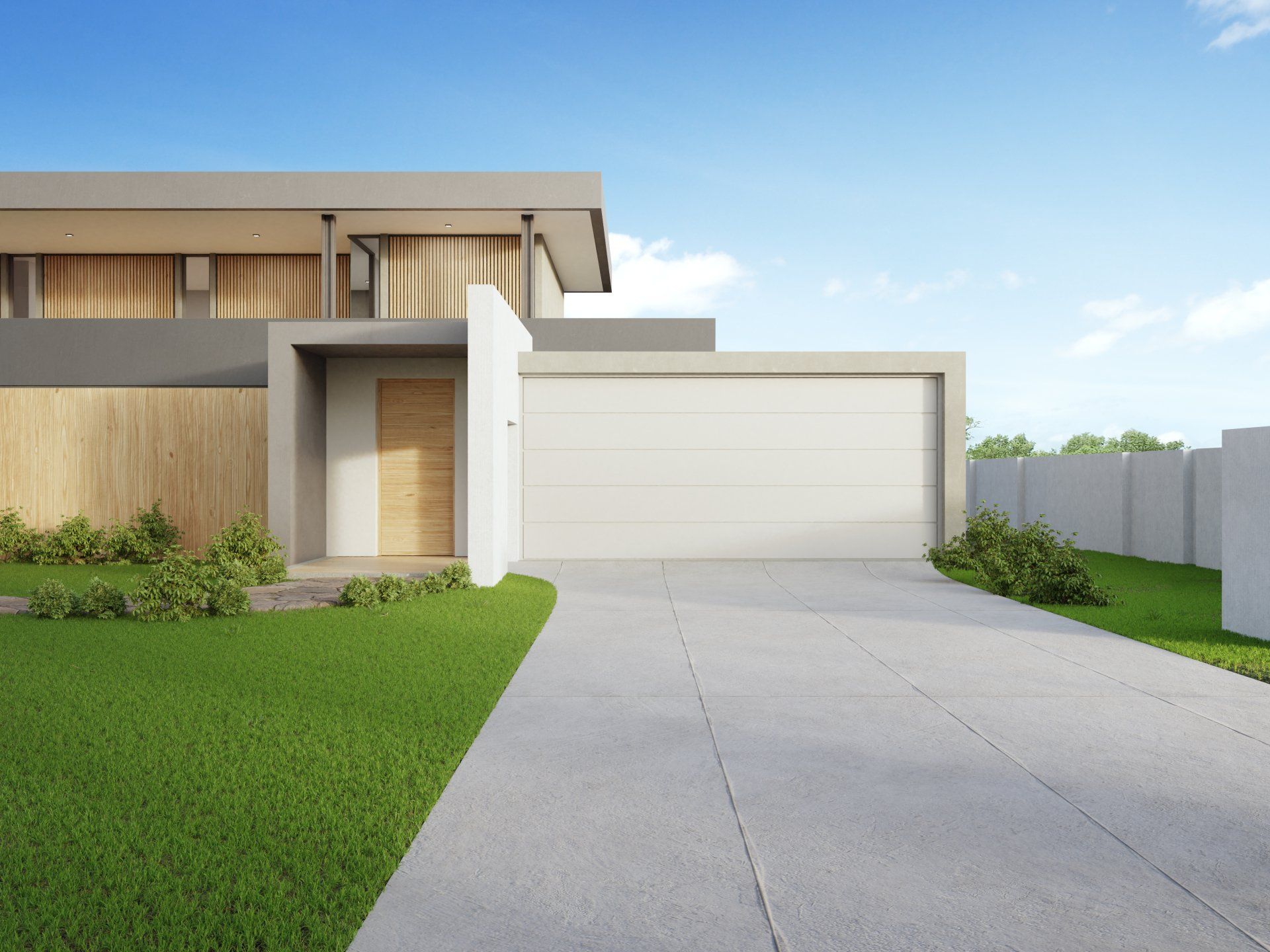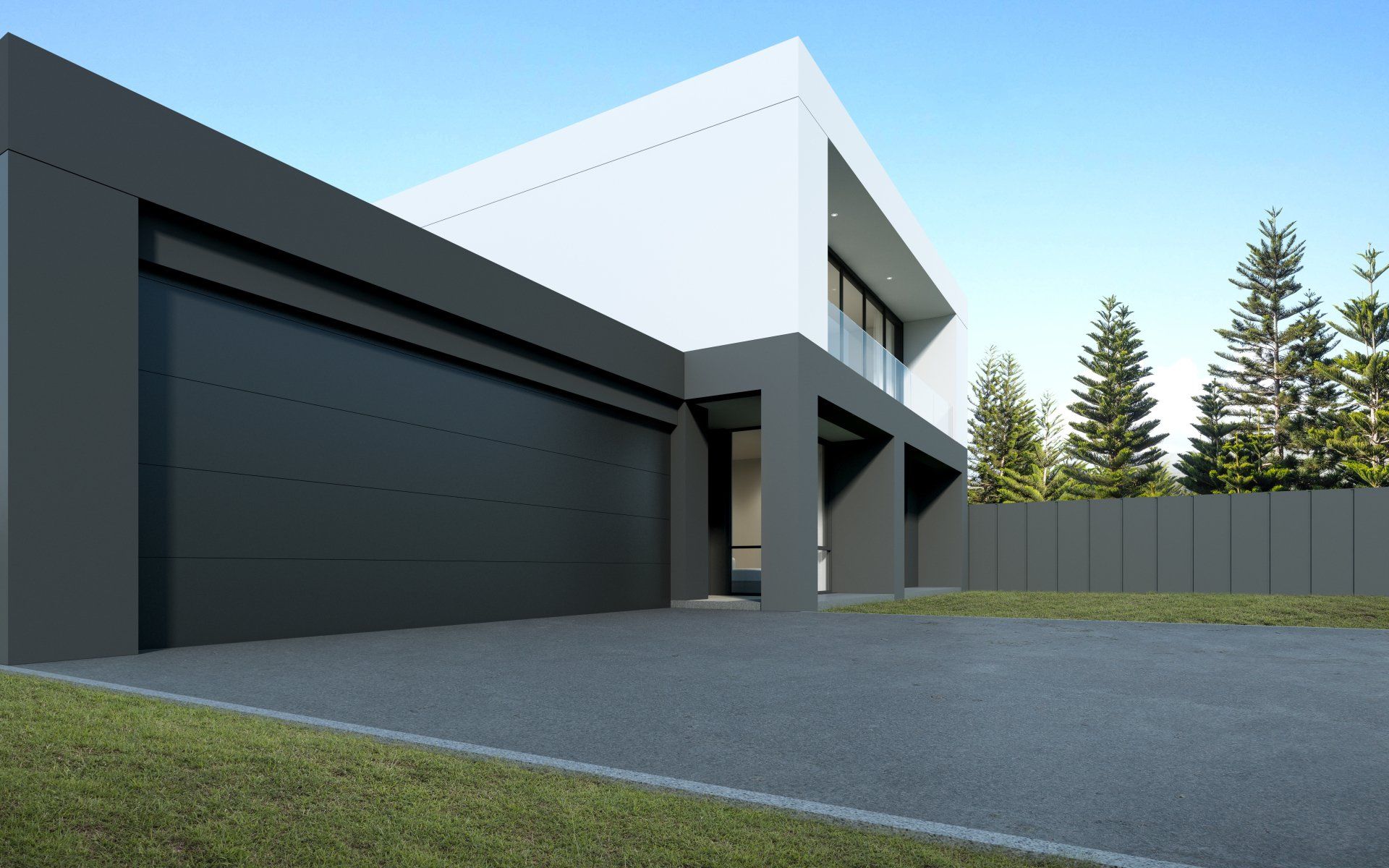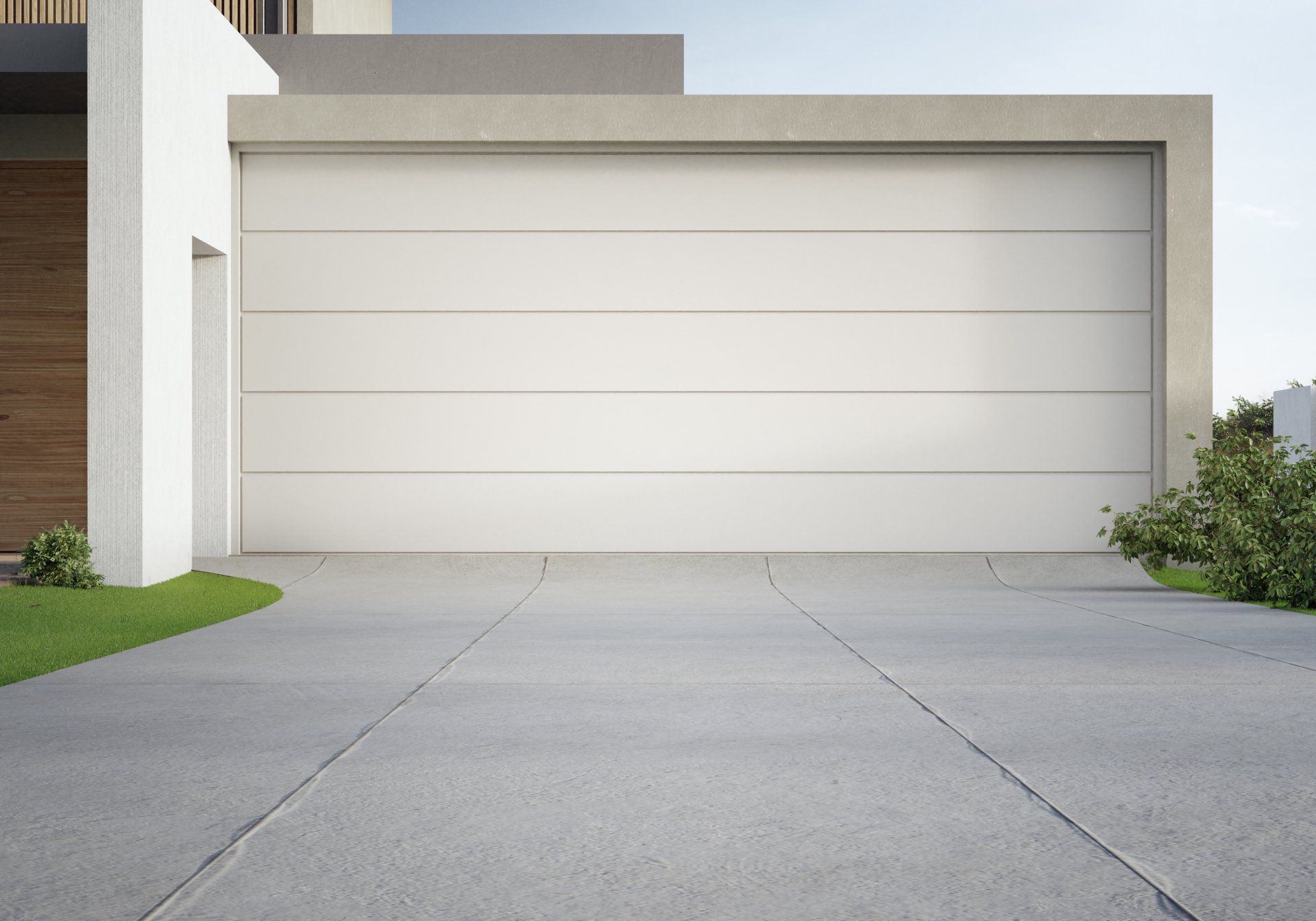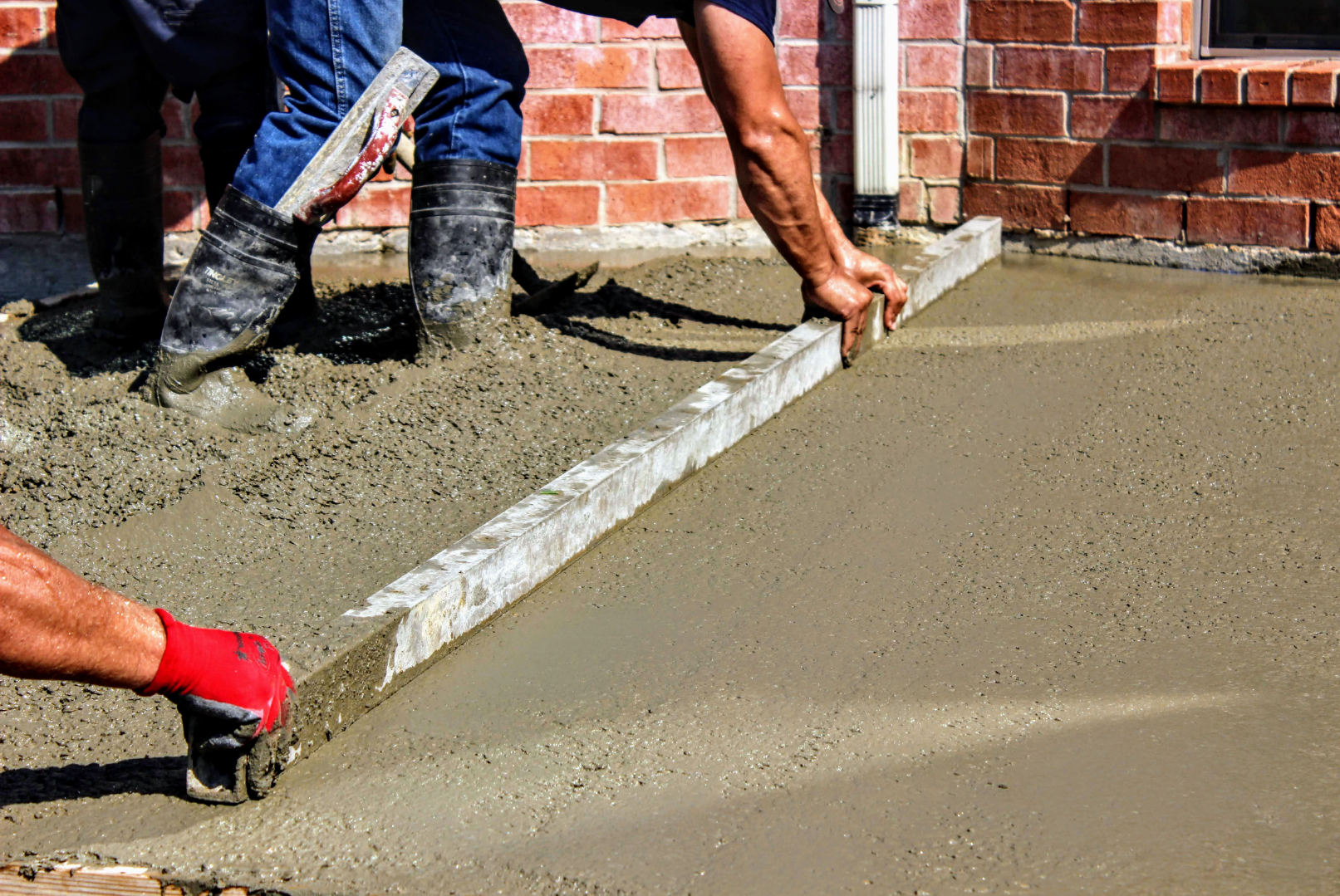Concrete drivewyas are not only strong and durable, but they also require little maintenance. And because of this combined strength with longevity, concrete is a relatively good value for large areas like driveways. This material may cost more than gravel or asphalt as an underlayment to pave on top of it (and way less expensive than brick, cobblestone, or pavers), but the price point makes sense when you consider how long your slab will last.
And although plain old concrete can be a dull and unappealing color, you've got the power to change that with paint or stamps!
Here are a few more pros and cons of having a concrete driveway:
Concrete as a Building Material:
The concrete that is used in construction and building can be mistakenly thought to have cement as its only ingredient. In reality, the term "cement" refers just to one component of concrete: a powder made from limestone and clay. As we all know, there are many other ingredients involved with producing this composite material-stones make up aggregate which get mixed together with water (or sand) plus lime based binder for an incredible mixture.
It's a common misconception that all concrete is made the same way. Concrete has many different uses, and in each of those instances it can be mixed with differing types of sand to create unique surfaces for chosen purposes. Building driveways or sidewalks? You'll need gravel-sized aggregate, but if you're looking for smoother finished surfaces like decorative flooring; finer sands will work better as an ingredient!
For typical driveway construction, concrete is formed with gravel-sized aggregates (e.g., pebbles), but for finer work and smoother finished surfaces (like decorative floors) newer methods use fine sands instead such as silica flour particles which are more expensive than regular sand due to their ability to make wet cement set up faster.
When concrete is first mixed, it can be poured into any shape and will continue to harden for months. Though a few days of curing makes it strong enough for most uses, some types of construction might need more time before the concrete becomes solidified.
In many applications, concrete is strengthened by adding metal wire or rebar to the slab. Other ingredients can also be added during mixing such as agents that improve strength and slow drying time.
Installation
A concrete driveway is one of those things that you could do yourself, as a homeowner, but ut is recommended that you hire professionals to get the job done. Concrete begins hardening immediately after it's poured and if there are any mistakes in the pour they will be discovered later - when it becomes too difficult to fix them without breaking up all the freshly-poured cement. For this reason, we recommend letting professionals take care of your project from start to finish: excavating for your new formwork (that'll give shape), preparing forms before pouring with just enough precision so everything goes smoothly on site (because now you can't add more material).
The homeowner who isn't afraid to get their hands dirty by pouring concrete should have a group of able-bodied helpers on standby.
To install a concrete driveway, you should first remove any grass and other vegetation. Then make sure to have stable soil for your foundation. After that is done by setting up the wood forms around the perimeter of where your driveway will be laid out at least 4 inches thick with class-5 gravel added on top as reinforcement material consisting either from steel wire grid or metal rebar depending what type of installation you're looking for - which are both very strong materials holding back all sorts of pressure such as vehicles driving over it day after day.
Your driveway is now ready for a concrete pour. This generally involves a crew of several people working quickly to fill the forms with wet cement as it's delivered from an on-site mixer, and then finishing up that surface quick like bunnies. The finishing crew should also make sure the slab is ready for its grand unveiling. This means ensuring an adequate number of expansion joints—kinds of grooves that will allow the concrete to break at controlled places as it settles and shifts under natural conditions, without fragmenting randomly.
Once the concrete is finished, it needs to be smoothed and made attractive. The finishing crew use a variety of tools such as rollers or trowels to work the surface through capillary action by drawing cement and finer particles up towards the top layer until they create an even smoother texture on your flooring. Slabs of material often need to be smoothed out and shaped before they can go anywhere else. Floaters, or people who use a liquid solution on the slabs in order to make them smoother, are needed. This process must be done carefully because if too much is applied then it will weaken the slab; but not enough means that when you look at your finished product there'll just be all these sharp points sticking up everywhere like some sort of medieval contraption left outside for years.
One of the most important parts of a concrete driveway installation begins after all things are completed—the curing. Concrete doesn't dry out; rather, it undergoes an extensive chemical process that hardens and strengthens the material. It is very essential this curing procedure takes place under high quality circumstances. That starts with weather conditions. Ideal curing climate is about 70 levels Fahrenheit (21 degrees Celsius). In cool weather, curing will take longer. In hot weather, the surface should be dampened regularly with water to slow down the curing time.
Wait at least a week before driving on your new driveway and make sure you wait until it's been sealed for a month or two before parking heavy vehicles on the new concrete driveway.
Maintenance
Many people think of concrete driveways as being maintenance free, but to ensure a long life you should keep it clean and sealed. A good scrubbing with hose water and stiff brush can usually handle the cleaning while sealer will add an extra layer of protection. Sealant should be applied at least once per year. When it comes to sealing a driveway, fall is the best time. You can ensure that your slab will stand up against road salts and harsh winter weather with this simple step in maintenance for our snowy weather.
Longevity and Cost
Concrete driveways generally remain functional for 25 to 50 years, depending on how well built they were and how well they have been maintained. A basic concrete driveway installed over a gravel base by a professional crew will cost $10to $15 per square foot. The national average is about $12 per square foot, making the cost of a 16 x 38 driveway about $7300. The cost of concrete can nearly double if you want a colored or stamped finish. Be prepared to pay more than usual, should there be demolition involved for the previous slab.
